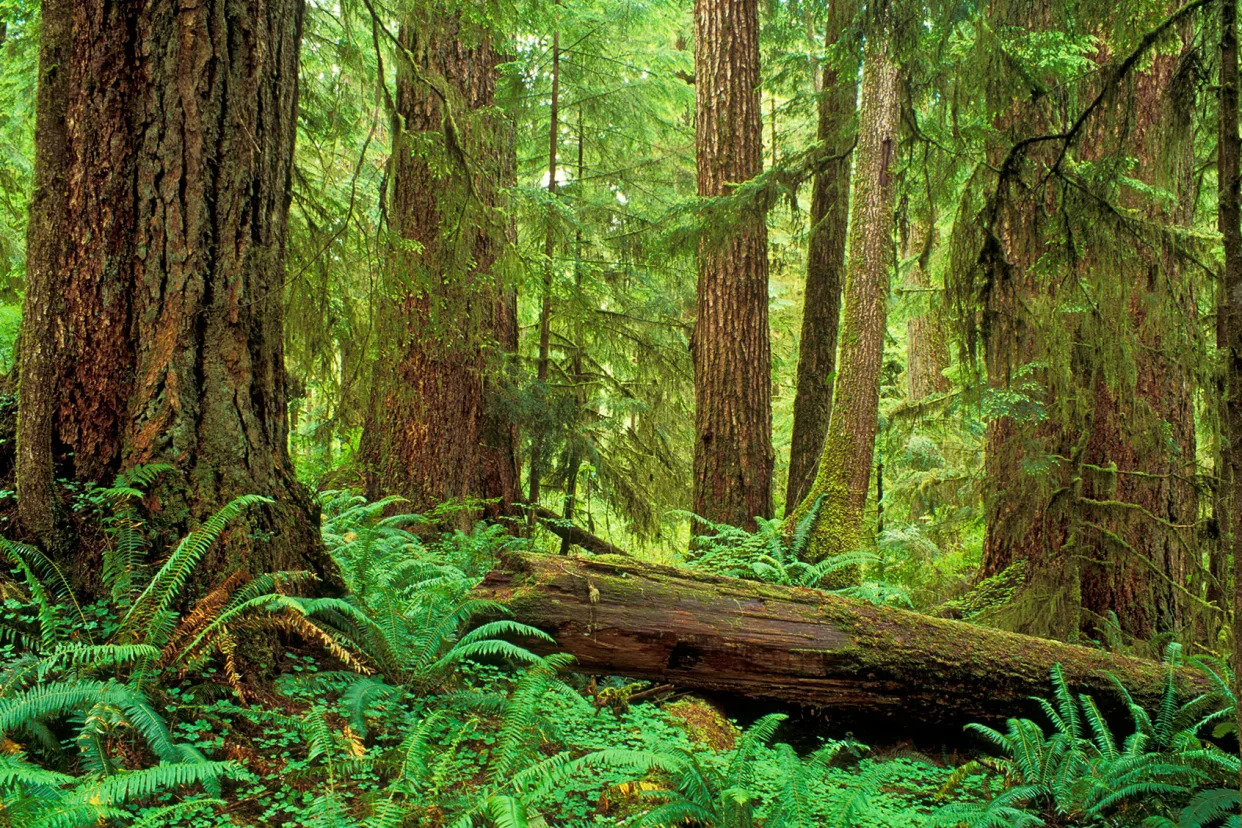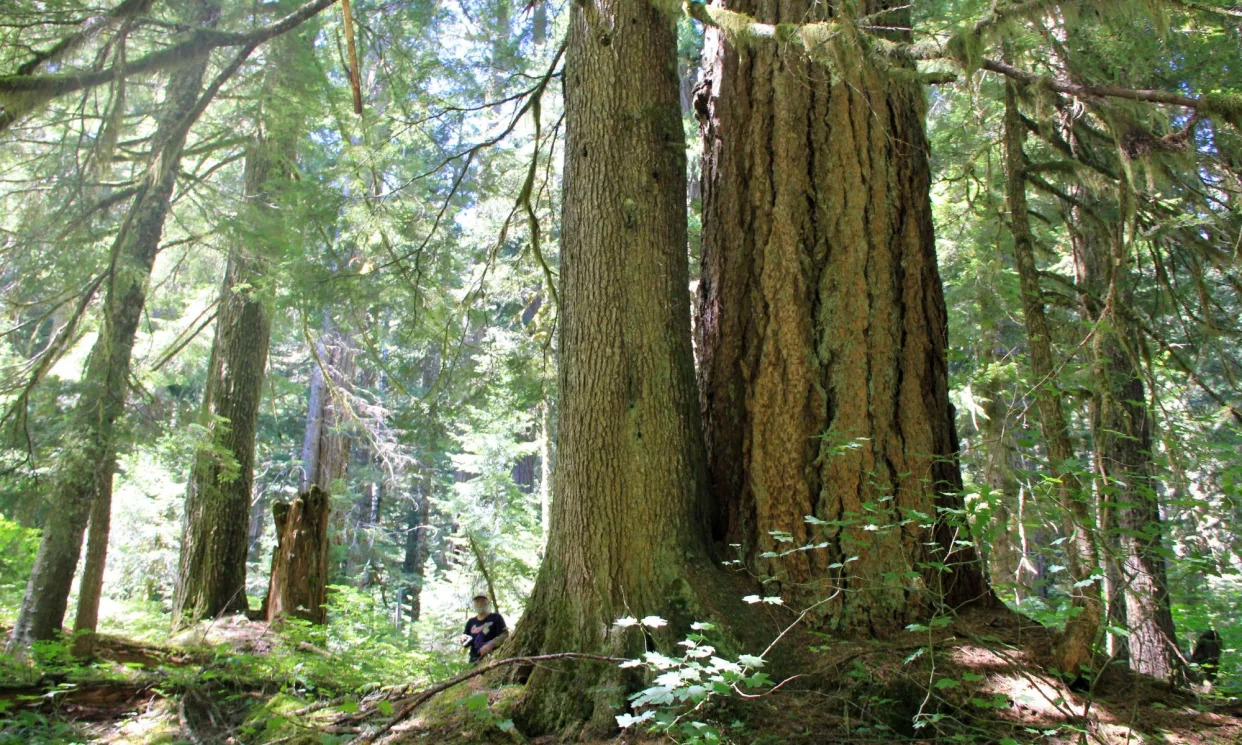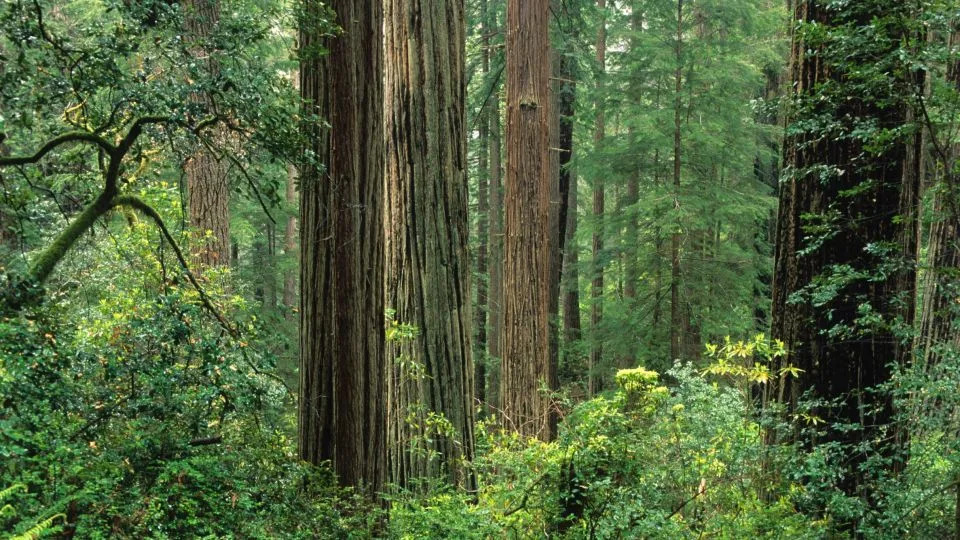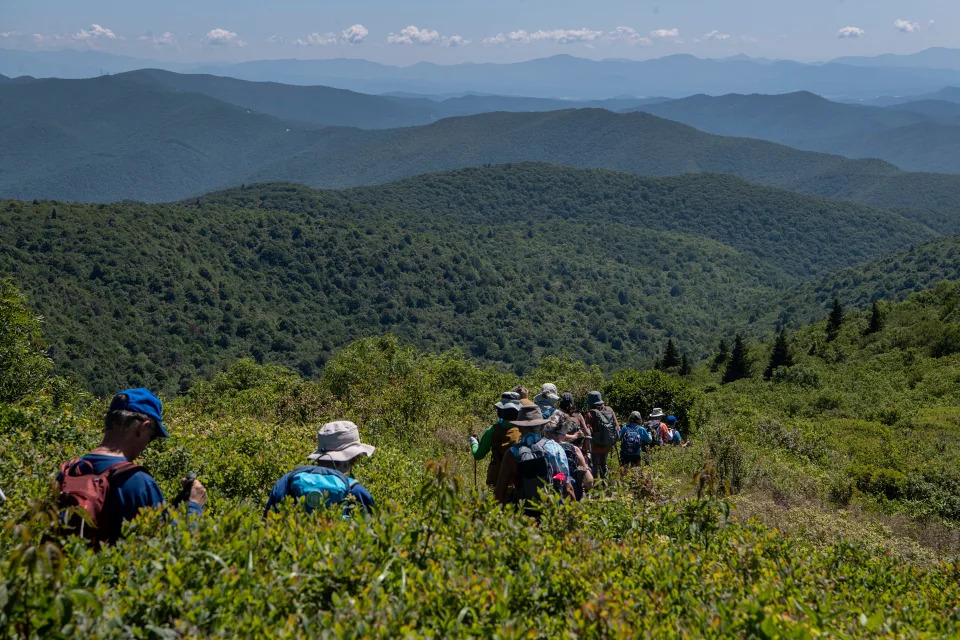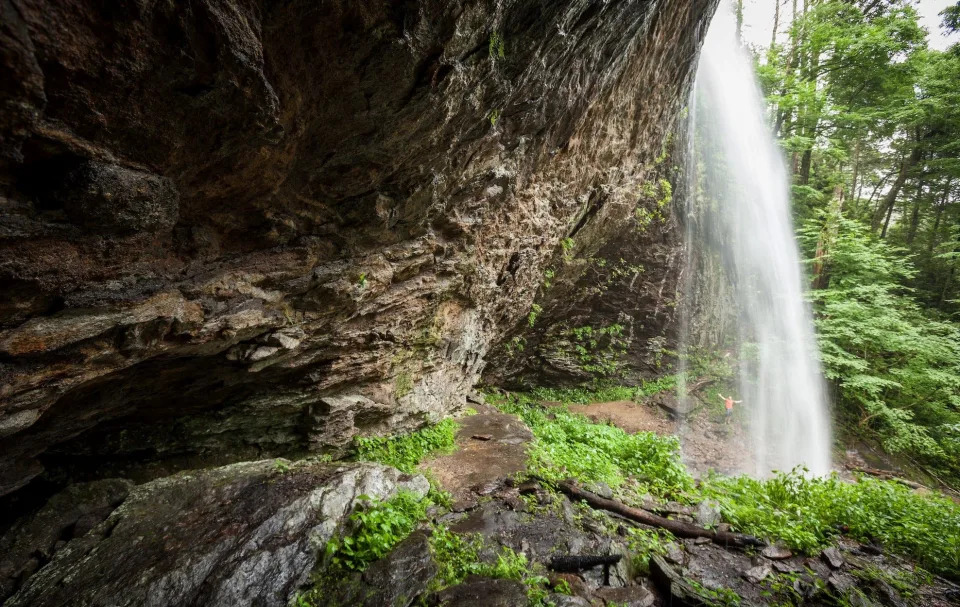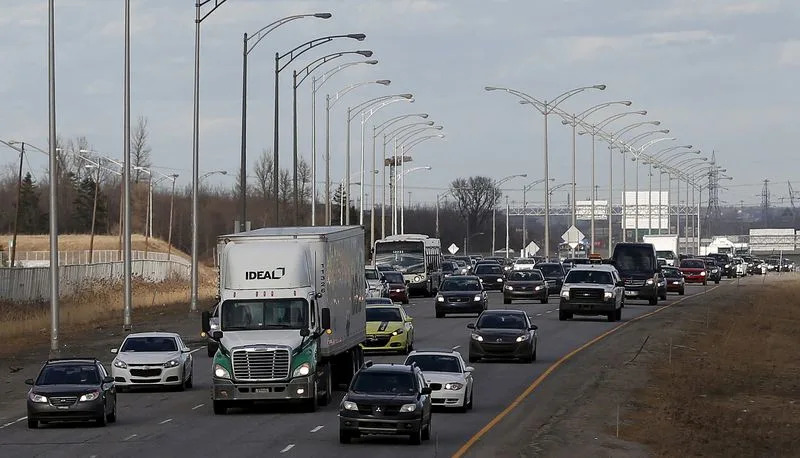Kate S. Petersen, USA TODAY
Updated Wed, December 20, 2023

The claim: No one has shown that human CO2 emissions drive global warming
An Oct. 3 Facebook video (direct link, archive link) shows Ian Plimer, a skeptic of human-driven climate change, speaking at the Australian Conservative Political Action Conference in 2022.
"Game over. We are dealing with a fraud," the video is captioned. "Geologist, Professor Ian Plimer, exposes the monumental fraud that is 'human-induced global warming' in just two minutes: 'No one has ever shown that human emissions of carbon dioxide drive global warming … And if it could be shown, then you would have to show that the 97% of emissions which are natural, do not drive global warming.'"
The post was shared more than 3,000 times in two months.
More from the USA TODAY Fact-Check Team:
Guidelines: How we identify, research and rate claims
Newsletter: Sign up for Checking the Facts; truth delivered daily to your inbox
Facebook: Like our page to get our latest debunks throughout the day
Our rating: False
More than a century of experimental and observational research by generations of scientists shows that modern global warming is driven by greenhouse gases emitted by human activity. Scientists know that natural CO2 emissions are not driving modern global warming because they are reabsorbed by natural "carbon sinks." However, additional emissions by humans have resulted in excess greenhouse gas accumulation in the atmosphere − driving global warming.
Multiple lines of evidence and decades of research show humans are causing climate change
Human CO2 emissions have warmed the planet by amplifying Earth's "greenhouse effect" − the process by which greenhouse gases slow the release of heat into space. Scientists determined this through a lengthy process, which included establishing that CO2 is a greenhouse gas, determining that both CO2 and temperatures are increasing, determining that the increase in atmospheric CO2 is due to human behavior and using this knowledge to accurately predict future warming.
In the mid-1800s, scientists Eunice Foote and John Tyndall experimentally demonstrated that CO2 is a greenhouse gas. These gases, such as CO2, warm the planet by absorbing radiation otherwise destined for space.
After absorbing this radiation, CO2 molecules release their own radiation − some of which makes its way into space. But some of it also gets directed laterally to be absorbed by other CO2 molecules or back down to the Earth, effectively trapping warmth in the lower atmosphere.
Scientists have repeatedly confirmed the existence of this physical process.
"The theory and mathematics of radiation passing through gases are clearly defined," Michael Roman, a planetary scientist at the University of Leicester, previously told USA TODAY. The greenhouse effect has "been verified by laboratory experiments and meteorological observations."
Can we count on renewable energy? Four ways wind, solar and water can power the US
Researchers have also shown that Earth's atmospheric CO2 concentrations are rising. For instance, in 1938, British engineer Guy Callendar determined that concentrations were increasing by analyzing historical records.
Two decades later, in 1958, geochemist Charles Keeling began daily measurements of atmospheric CO2 concentrations at the Mauna Loa station in Hawaii. Ongoing station measurements show that CO2 concentrations have increased by more than 100 ppm since then, rising to 420 ppm.
Callendar also reported that Earth's temperature had warmed, a finding that has been subsequently verified by multiple independent climate agencies based on global temperature sensors and satellite data. Modern scientists have also documented the consequences of this warming, which include glacial and polar ice melt, sea level rise − due to both ice melt and the expansion of warming seawater − and an increase in the frequency of certain extreme weather events, such as heat waves.
Based on the physics of the greenhouse effect and other processes, a certain amount of warming should result from a given increase in atmospheric greenhouse gas concentrations on Earth. And this is what scientists have observed.
"The amount of warming we see matches what we expect based on the increased CO2 we've added," Josh Willis, a NASA climate scientist, previously told USA TODAY. "The timing of the warming matches the timing of the CO2 increase caused by people. Not only that, the timing of global sea level rise matches the CO2 increase."
Successful predictions show climate science is sound
Scientists have successfully leveraged their understanding of greenhouse gas and climate physics to predict future warming far in advance.
For instance, in the 1970s, scientists at oil giant ExxonMobil predicted decades of CO2-driven global warming before it occurred.
Harvard University historian of science Naomi Oreskes co-authored a 2023 analysis of ExxonMobil data from that time, reporting in the paper that "63 to 83% of the climate projections reported by ExxonMobil scientists were accurate in predicting subsequent global warming."
In an email to USA TODAY, she called the Facebook post's claim "preposterous."
Past independent academic and government projections have also been relatively accurate, according to a 2017 Carbon Brief analysis of eight "prominent" climate models published between 1973 and 2013.
"Climate models published since 1973 have generally been quite skillful in projecting future warming," wrote Zeke Hausfather, the author of the analysis, who was working as a research scientist at Berkeley Earth at the time. "While some were too low and some too high, they all show outcomes reasonably close to what has actually occurred, especially when discrepancies between predicted and actual CO2 concentrations and other climate forcings are taken into account."
Past scientists also used their understanding of greenhouse gas and climate physics to predict that, while Earth's lower atmosphere would warm as CO2 levels increase, the stratosphere − an atmospheric layer roughly between 6 and 30 miles above the Earth's surface − would cool.
This stratospheric cooling, caused in part by the increased retention of radiation in the lower atmosphere, has since been documented by researchers using weather balloon and satellite measurements.
In addition to demonstrating that CO2 has increased and warmed the lower atmosphere, scientists have also confirmed that the excess CO2 in the atmosphere is due to human emissions.
One clue is that "the accumulation in the atmosphere matches the amount we've added through burning fossil fuels," Hausfather previously told USA TODAY.
Additionally, modern atmospheric CO2 contains a disproportionately high amount of a certain type of carbon − the type found in fossil fuels.
"There are many different 'fingerprints' that have been clearly identified by scientists as evidence that industrial pollution is the cause of recent global heating," Dargan Frierson, an atmospheric scientist at the University of Washington, told USA TODAY in an email. "This is not exactly a 'whodunit' situation. The evidence is overwhelming that fossil fuel burning is the culprit."
Natural CO2 emissions reabsorbed in 'carbon sinks,' humans tipped the scale
The post also implies that if natural CO2 emissions dwarf human emissions, then human CO2 cannot be the driver of climate change. That is wrong.
Currently, around 95% of annual CO2 emissions are natural, according to the 2022 Global Carbon Budget. This is similar to the figure in the post.
However, Earth's ecological systems reabsorb natural emissions in “carbon sinks,” such as forests, as part of Earth's carbon cycle, Gavin Schmidt, a NASA climate scientist, told USA TODAY.
Excess CO2 emissions are accumulating in the atmosphere because Earth's natural carbon sinks do not have the capacity to absorb all of the extra CO2 that humans emit, he said.
After decades of accumulation, atmospheric CO2 levels have increased by 50% since pre-industrial times, rising to levels unprecedented in hundreds of thousands of years, according to the National Oceanic and Atmospheric Administration.
Fact check: Humans are responsible for a significant amount of CO2 in the atmosphere
USA TODAY reached out to Plimer and the Facebook user who shared the post for comment but did not immediately receive a response.
Climate Feedback also debunked the claim.
Our fact-check sources:
Mark Zelinka, Dec. 4, Email exchange with USA TODAY
Dargan Frierson, Dec. 13, Email exchange with USA TODAY
Naomi Oreskes, Dec. 15, Email exchange with USA TODAY
Gavin Schmidt, June 7, Email exchange with USA TODAY
USA TODAY, Jan. 20, Fact check: Global warming caused by greenhouse gas emissions, not mysterious ocean warming
USA TODAY, Dec. 5, 2021, Fact check: Human-generated CO2, not water vapor, drives climate change
USA TODAY, Nov. 1, False claim 'climate crisis hoax' statement signed by thousands of scientists | Fact check
USA TODAY, June 26, Humans are responsible for a significant amount of CO2 in the atmosphere | Fact check
USA TODAY, Jan. 10, Fact check: Global temperatures and atmospheric CO2 levels are correlated, contrary to claim
USA TODAY, Nov. 29, Global warming is from human activity, not sea volcanos or El Niño | Fact check
USA TODAY, Feb. 27, Fact check: Carbon dioxide has an effect on the climate, contrary to post
USA TODAY, Nov. 28, Fact check: Earth's warming well documented, other planets' climate data limited
Australian Department of Climate Change, Energy and the Environment and Water, accessed Nov. 26, Understanding climate change
The Conversation, July 21, 2020, John Tyndall: the forgotten co-founder of climate science
NASA Vital Signs of the Planet, March 25, 2021, Direct Observations Confirm That Humans Are Throwing Earth's Energy Budget off Balance
NASA Vital Signs of the Planet, accessed Dec. 15, Causes
NASA Vital Signs of the Planet, accessed Dec. 15, Global temperature
NASA Vital Signs of the Planet, accessed Dec. 15, Carbon dioxide
NASA Vital Signs of the Planet, accessed Dec. 15, Ocean warming
NASA Vital Signs of the Planet, accessed Dec. 15, Ice sheets
NASA Vital Signs of the Planet, accessed Dec. 15, Sea level
NASA Earth Observatory, accessed Dec. 15, World of Change: Global Temperatures
Environmental Protection Agency, July 2022, Climate Change Indicators: Heat Waves
Environmental Protection Agency, accessed Nov. 26, Climate Change Indicators: Weather and Climate
NOAA, Oct. 12, 2022, How do we know the build-up of carbon dioxide in the atmosphere is caused by humans?
NOAA, May 12, Climate Change: Atmospheric Carbon Dioxide
University Corporation for Atmospheric Research, accessed Dec. 12, History of Climate Change Interactive Timeline
University Corporation for Atmospheric Research, accessed Dec. 15, The Stratosphere
Carbon Brief, April 28, 2021, Melting glaciers drove ‘21% of sea level rise’ over past two decades
Carbon Brief, Oct. 5, 2017, Analysis: How well have climate models projected global warming?
BBC, April 26, 2013, Guy Stewart Callendar: Global warming discovery marked
Wired, Jan. 23, 2018, Meet the Amateur Scientist Who Discovered Climate Change
The Harvard Gazette, Jan. 12, Exxon disputed climate findings for years. Its scientists knew better
Science, Jan. 13, Assessing ExxonMobil’s global warming projections
National Geographic, accessed Dec. 17, Carbon Sources and Sinks
Global Carbon Project, 2022, Global Carbon Budget 2022
PNAS, May 8, Exceptional stratospheric contribution to human fingerprints on atmospheric temperature
University of California Los Angeles, Aug. 21, Stratospheric cooling: The concerning flip side of global warming
World Resources Institute, Jan. 21, 2021, Forests Absorb Twice As Much Carbon As They Emit Each Year
Thank you for supporting our journalism. You can subscribe to our print edition, ad-free app or e-newspaper here.
USA TODAY is a verified signatory of the International Fact-Checking Network, which requires a demonstrated commitment to nonpartisanship, fairness and transparency. Our fact-check work is supported in part by a grant from Meta.
This article originally appeared on USA TODAY: Is global warming caused by humans? Evidence says yes | Fact check












